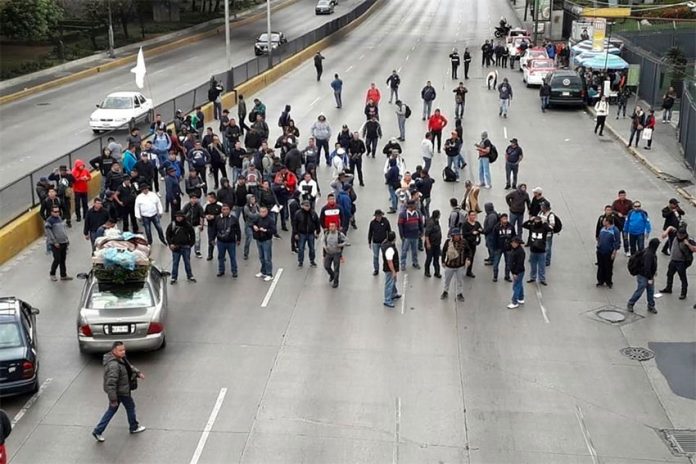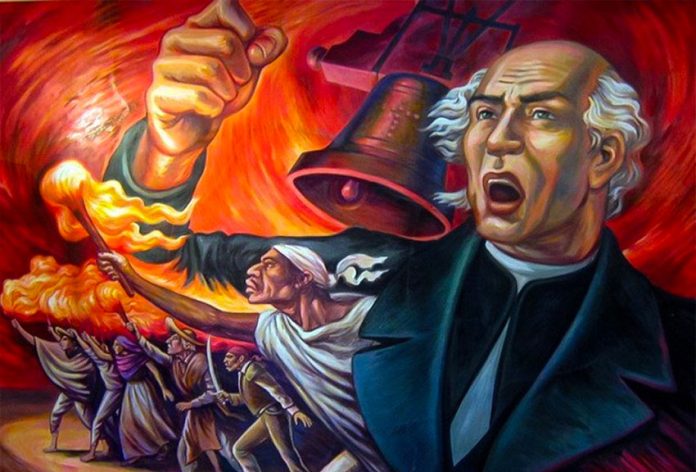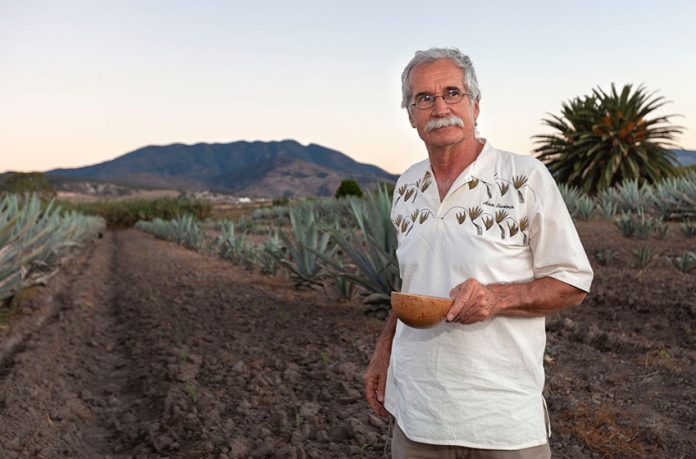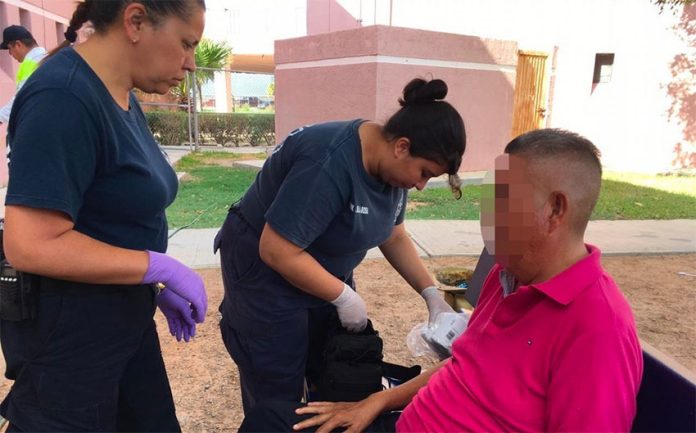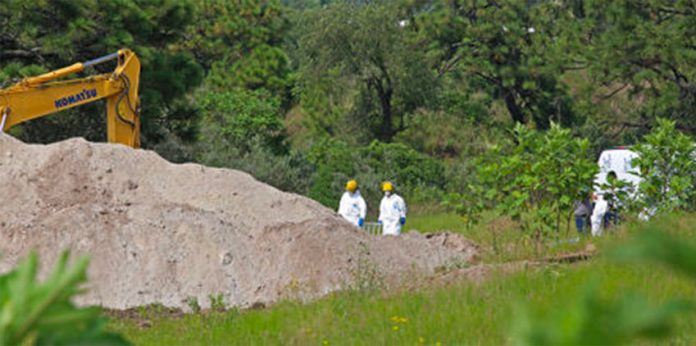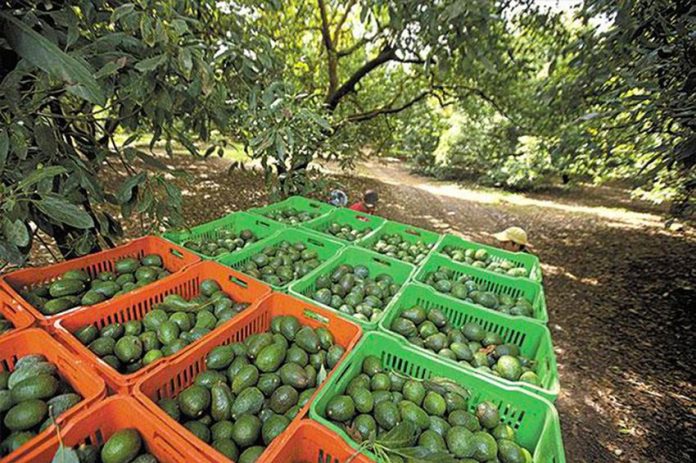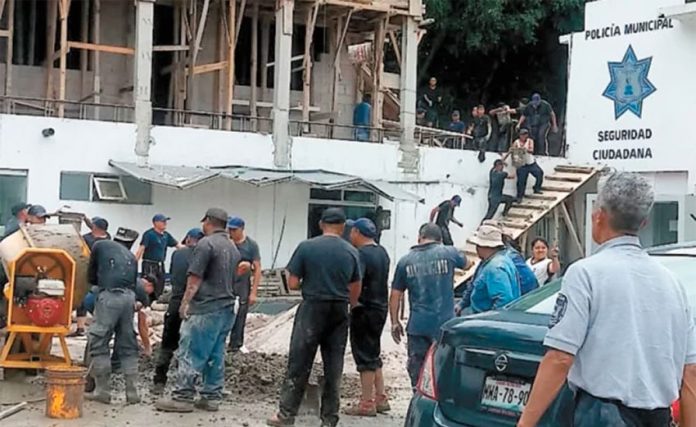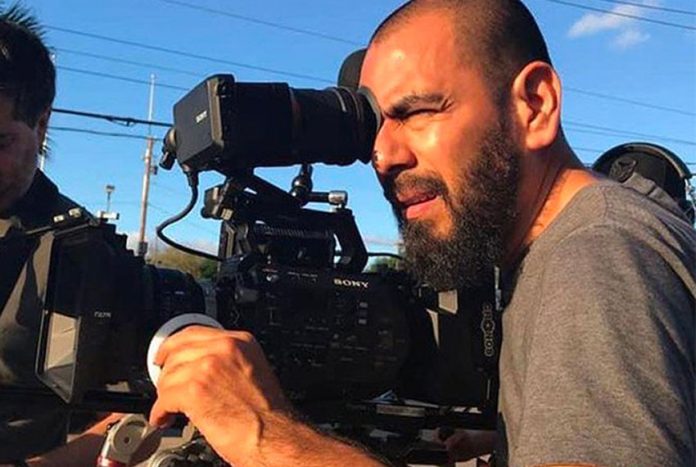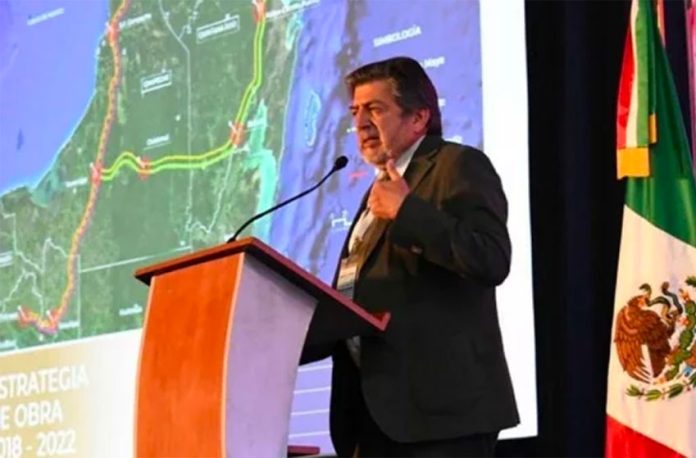A group of Federal Police officers blocked access to the Mexico City airport on Friday, renewing their protest against transfer into the National Guard.
At least 100 officers dressed in civilian clothes blocked the Circuito Interior freeway near the entrance to Terminal 1 of the airport, the newspaper El Universal reported. The protest, which began shortly before 1:00pm, came after officers had attended a meeting at Federal Police headquarters in the Mexico City borough of Iztapalapa.
Federal Police first protested against their incorporation into the National Guard in early July, arguing that their salaries will be cut and they will lose benefits. They also claimed that if they refuse to join the new force, they will lose their jobs.
Protesting officers today demanded the payment of compensation and called federal Security Secretary Alfonso Durazo a liar.
Durazo and President López Obrador have both said that no Federal Police officers will be forced to join the National Guard.
The security secretary announced in July that the Federal Police will be disbanded within 18 months but explained that if officers don’t want to enter the National Guard, they will have the opportunity to join a range of other organizations such as the National Immigration Institute, Civil Protection services, customs or the National Anti-Kidnapping Commission.
The federal Security Secretariat (SSPC) said on Twitter on Friday that no officers will be dismissed, explaining that they will be able to choose from 11 different work options.
In another post just after 3:30pm, the SSP said it was open to dialogue with the protesting officers and urged them to reconsider their decision to block traffic.
However, as of 4:30pm, the protest on Circuito Interior was continuing, the newspaper Milenio reported.
The Mexico City Metro system said on Twitter that people who need to get to the airport can use its Line 5 services to the stations Hangares and Terminal Aérea, while transportation authorities advised motorists to use alternate routes such as Avenida Oceanía.
Officers taking part in today’s protests were described as a “radical wing” of the Federal Police by some of their colleagues. Leaders of past protests said the demonstrating officers were acting independently and without their endorsement.
About 500 Mexico City police officers were deployed to the area around the airport to monitor the demonstration and prevent the protesters from entering the terminal.
The blockade has affected traffic attempting to reach both Terminal 1 and Terminal 2 of the airport, the newspaper El Financiero said.
Photographs posted to social media showed some people getting into police vehicles in order to get to the airport with enough time to check in and make their flights. However, others who didn’t have the option of abandoning the vehicle in which they were traveling were left stranded.
Source: Reforma (sp), El Financiero (sp), El Universal (sp)
